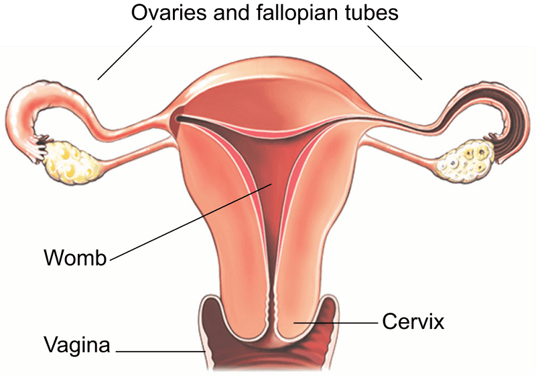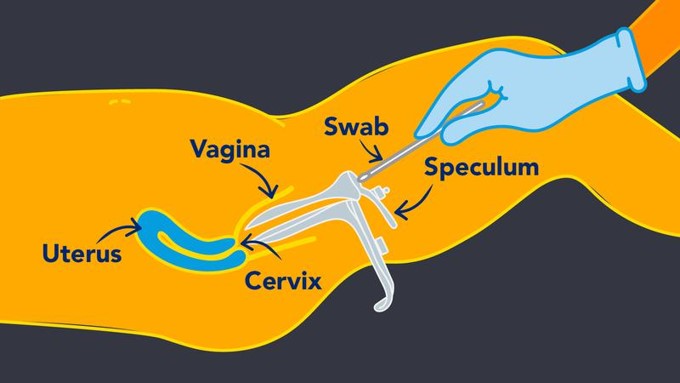
- Augusta University
- Georgia Cancer Center
- Community Connections
- Women's Health on the Road
- Cervical Cancer Screening
Cervical Cancer Screening
Contact Us
Women's Health on the Road
Health Sciences Campus
GCC - M. Bert Storey Research Building
706-721-xxxx

What is cervical cancer?
Cervical cancer starts in the cells lining the cervix -- the lower part of the uterus (womb). (The cervix connects the vagina (birth canal) to the upper part of the uterus. The uterus (or womb) is where a baby grows when a woman is pregnant.)
Cancer starts when cells in the body begin to grow out of control.
Cells in the transformation zone do not suddenly change into cancer. Instead, the normal cells of the cervix first gradually develop abnormal changes that are called pre-cancerous.
Although cervical cancers start from cells with pre-cancerous changes (pre-cancers), only some of the women with pre-cancers of the cervix will develop cancer. For most women, pre-cancerous cells will go away without any treatment. But, in some women pre-cancers turn into true (invasive) cancers. Treating cervical pre-cancers can prevent almost all cervical cancers.
Anyone with a cervix is at risk for cervical cancer. It occurs most often in people over age 30. Long-lasting infection with certain high-risk types of human papillomavirus (HPV) is the main cause of cervical cancer. HPV is a common virus that is passed from one person to another during sex. At least half of sexually active people will have HPV at some point in their lives, but few women will get cervical cancer. HPV usually causes no symptoms so you can’t tell that you have it.
Screening tests and the HPV vaccine can help prevent cervical cancer. When cervical cancer is found early, it is highly treatable and associated with long survival and good quality of life.
Screenings and early detection are especially crucial for BIPOC communities. In the U.S., Latinx and Black communities suffer disproportionately from cervical cancer due to structural inequities in health care. Latinas have a higher rate of cervical cancer than white women, and Black women have the highest mortality rates from cervical cancer of any racial or ethnic group in the U.S.
Why cervical screening matters - Cervical cancer screening saves lives!
Anyone with a cervix is at risk for cervical cancer. The goal of cervical cancer screening is to find pre-cancerous cells before they become cancer or to find cancer early when it is more easily treated and cured. Screening can prevent cervical cancer and save your life!
What screening test is used for cervical cancer?
A Pap test, or Pap smear, is used to screen for cervical cancer. Your doctor will
collect cells from your cervix and send them to a lab so they can look for abnormal
cells. Your test results will come back as “normal” or “abnormal.” This lets your
doctor know if you need more tests.
Doctors recommend people ages 21 to 65 with a cervix get a Pap test every 3 years starting at age 21. Or women 30 years of age and older may have an HPV test and Pap Test every 5 years. Your doctor may recommend getting a Pap test more often if you have certain risk factors like:
- Humanpapillomavirus (HPV), the leading cause of cervical cancer
- Pap test that showed precancerous cells or a diagnosis of cervical cancer
- Weaker immune system due to HIV infection, autoimmune disease, or organ transplant
- History of smoking
- If your mother took diethylstilbestrol (DESS) while pregnant with you.
What to expect at your screening
The Pap test (or Pap smear) is used to detect precancers (alterations on the cervix that might become cervical cancer if they are not treated).
During the Pap test, the doctor will use the speculum, an instrument to exam your vagina. This helps the doctor visualize the vagina and the cervix. The doctor will collect a few cells and mucus from the cervix and the area around it and send it to the laboratory.
A Pap smear can be performed at clinic or in the mobile health unit. It will take only a few minutes.
You will need to undress from the waist down and lie down on the exam table. Then, the doctor will slowly insert the speculum into your vagina, so them can see your cervix. You will feel a sensation of pressure. Afterwards, the doctor will collect some cells from your cervix with a soft brush.
The bottom line – You can reduce your risk of cervical cancer!
You can help prevent cervical cancer! Get vaccinated against HPV, have regular screenings, and go back to the doctor if your screening test results are abnormal. Screening saves lives! Talk to a doctor about your options.
How and when will I get the results off my Pap test?
How/when will I get my results?
You will get a letter with your results and can expect them in a few days after your visit. If you do not receive your results in 30 days, you can contact the patient navigator.
What do my Pap test results mean?
Pap test results can be either normal or abnormal.
What if I have a normal Pap test result?
If you are 21 to 65 years old, mark your calendar to have your next Pap test in 3 years. If you are older than 65, talk with your doctor about next steps.
What can I do to prevent an abnormal Pap test?
The Human papillomavirus (HPV) vaccine provides the best protection against cervical cancer. If you have not been vaccinated against HPV, consider getting vaccinated. Women up to age 45 can receive the vaccine. Also, consider using condoms during sex to protect against HPV.
What if I have an abnormal Pap test result?
An abnormal Pap test result may mean that you have a cervical precancer or cancer. Depending on your result, your health care provider may simply recommend you return to have additional testing in the future. Or you may need an examination called colposcopy. The colposcopy exam enables a careful inspection of your cervix to look for abnormal cells. If abnormal cells are found, a small biopsy may be obtained.
The good news is many cervical cancers grow slowly, and with regular screening most are found early before they even become cancer.
Your health care provider is there to answer your questions, so be sure to ask!
Sponsors


Participating Clinics

